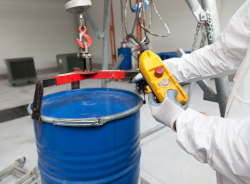Introduction to Hazards
The goal of hazard identification and control is to make the workplace and its operations as safe as possible and to keep employees from being harmed.
To develop a system to identify and control hazards, start by carefully planning and designing interrelated processes and procedures. Next, implement and carefully watch the system perform. Finally, revise and improve preventive measures and controls as the worksite changes and as the store of hazard information grows.
To be effective in protecting employees from workplace hazards, first understand what those hazards are.
Where are the Hazards?
- Many workplaces contain hazardous materials including raw materials (i.e., wood, metal, plastic) to be manufactured into finished goods, and toxic chemicals (i.e., solvents, acids, bases, detergents) used at various stages of the process.
- Stationary machinery and equipment may not be properly guarded, or in poor working order because of poor preventive/corrective maintenance.
- Tools may not be properly maintained. Saws may not be sharpened, or safety harnesses may be old and in need of replacement.
- The work environment might include extreme noise, flammable or combustible atmospheres, or poor workstation design. Floors may be slippery and aisles cluttered. Guardrails, ladders, or floor hole covers may be missing or damaged.
- Employees might be fatigued, distracted in some way, or otherwise lack the mental/physical capacity to accomplish work safely.
Some of these potential safety hazards may exist in a workplace. The list could go on and on. It is important workers and supervisors be knowledgeable to ensure workplace hazards are identified and eliminated as soon as possible. Remember, it takes both a hazard and exposure to the hazard before an accident will occur.
Knowledge Check Choose the best answer for the question.
1-1. What is required for an accident to occur?
You forgot to answer the question!

